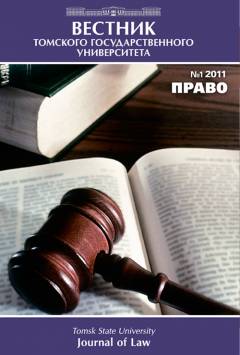Complicity in the illicit sale of drugs and their analogues, perpetrated via electronic information and telecommunication networks
The purpose of the present study is to examine certain aspects of complicity in relation to criminal activities of those who are engaged in illicit sale of drugs and their analogues by the use of electronic or information and telecommunication networks and to study court practice in such a category of cases i.e. cases committed in complicity. One of the objectives of the study was the consideration of complicity in the form of an organized group, since the nature of the illegal marketing in a specified way involves mainly the existence of close links between members of the group, performing different criminal acts. To achieve the above objective the author uses a systemically-structural; systematic-functional, formal-legal, comparative-legal and sociological methods. Public danger of illicit sale of drugs via electronic information and telecommunication networks is due to the possibility to significantly expand the scope of illegal marketing and to involve a huge number of individuals in non-medical drug usage. This raises the need to consider a number of issues of complicity, particularly in the form of an organized group - the main supplier of drugs. The ambiguity of doctrinal approaches to understanding the complicity and its forms is pointed out. The approach, which combines simultaneous handling of objective and subjective criteria, reflects the nature of complicity to the fullest extent. The author shares the view about the sustainability of an organized group as a fundamental characteristic of this form of complicity, and court practice confirms this view. The author names the indicative acts performed by the organizer of the given group and its members that are aimed at the functioning of the group and sale of drugs to particular persons. The viewpoint on the possibility to apply the model of complicity to the cases of negligent crimes is criticized. Possible cases of excess of the doer of an action with regard to the specified crime are considered. Conclusions: 1. The opinion about the need to exclude the indication of the stability of an organized group from Part. 3, Article 35 of the Criminal Code, since it is this characteristic that enables us to distinguish this form of complicity from a group of persons acting together by a prior agreement seems to be a controversial one. 2. The tendency of developing of an organized group involved in an illicit sale of drugs and their analogues into the criminal community requires a legislative solution of the issue of liability of individuals for involving new members into an organized group. 3. The excess of the doer of an action should not be viewed when a so-called "courier" carries out drugs in larger quantities than it was planned by the organizer: the existence of such a prerequisite for the sustainability of an organized group as the intensity of its activities should be taken into account. 4. There can be no complicity in negligent crimes since those involved in their commission have no understanding that they perform coordinated acts to achieve a single criminal purpose.
Keywords
незаконный сбыт наркотических средств, преступное использование электронных и информационно-телекоммуникационных сетей, соучастие, организованная группа, преступное сообщество, illicit sale of drugs, criminal use of electronic information and telecommunication networks, complicity, organized group, criminal communityAuthors
| Name | Organization | |
| Knyazkov Aleksey S. | Tomsk State University | ask011050@yandex.ru |
References

Complicity in the illicit sale of drugs and their analogues, perpetrated via electronic information and telecommunication networks | Tomsk State University Journal of Law. 2018. № 30. DOI: 10.17223/22253513/30/5